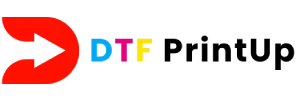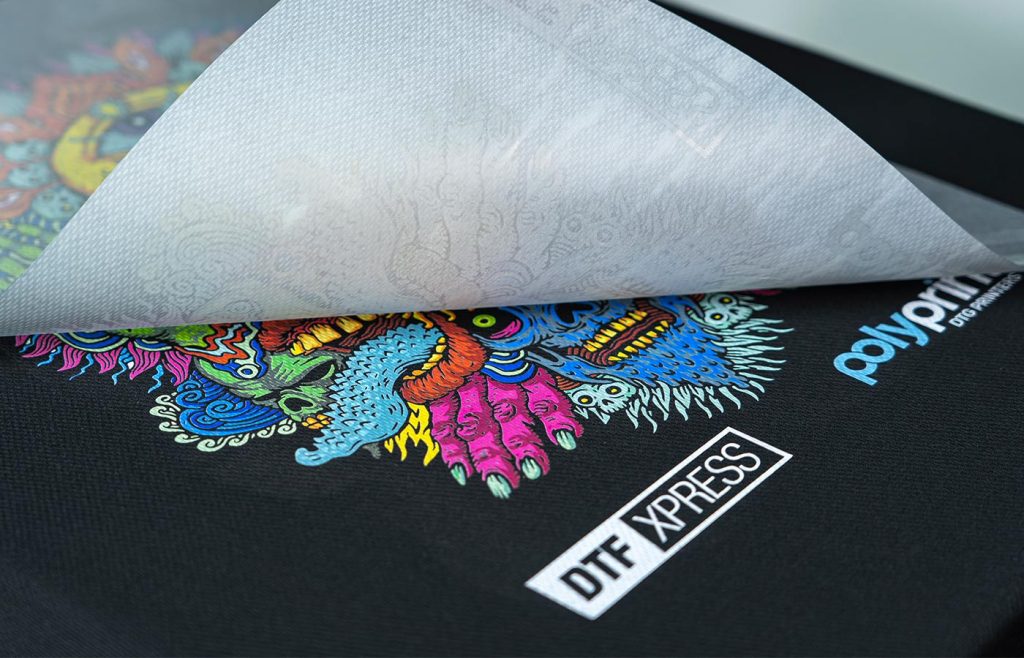Direct to Film (DTF) printing is revolutionizing the way vibrant prints are created for custom apparel, setting a new standard for quality and versatility. This innovative printing technology enables the clear transfer of intricate designs onto various materials, making it a go-to choice for many businesses in the garment industry. By utilizing a unique printing process that combines water-based inks and heat transfer, DTF offers unparalleled color accuracy and vibrancy. Whether you’re producing a single custom t-shirt or bulk orders for events, understanding how DTF works can greatly enhance your product offerings. With advancements in DTF technology continually improving efficiency, the method is gaining traction among designers and businesses alike, further accentuating its role in modern custom apparel printing.
Known as film-based printing, the Direct to Film (DTF) method is transforming the landscape of image transfer technology, particularly in the realm of personalized clothing and accessories. This state-of-the-art process merges elements of digital imagery with the reliability of traditional printing techniques, allowing for eye-catching designs that maintain their integrity over time. The appeal of DTF printing lies not only in its ability to create striking visuals on diverse substrates but also in its adaptability for small to medium production runs. As the demand for unique and customized promotional items escalates, alternative techniques like direct film transmission become essential for businesses looking to differentiate themselves in a competitive market. By leveraging the power of this technology, designers can explore limitless creative possibilities while delivering high-quality products to their clients.
Understanding the DTF Printing Process
The Direct to Film (DTF) printing process is a multi-step method that ensures high-quality and vibrant prints. It starts with printing the desired design onto a specially coated film using advanced DTF printers. These printers use a combination of CMYK and white inks, allowing for exceptionally bright colors that stand out on various fabric types, including dark materials. The precision of this printing technique helps capture intricate design details, making it a favorite for custom apparel printing.
After printing, a hot-melt adhesive powder is applied to the wet ink, which is a critical step as it prepares the design for the transfer process. Following this, the adhesive is cured using heat, creating a stable and robust print that bonds the ink to the fabric during the transfer. Finally, a heat press is utilized to transfer the design onto the garment, ensuring the colors and details remain intact. This meticulous process is what makes DTF printing a preferred choice for producing vibrant prints.
Advantages of DTF Technology
One of the standout advantages of DTF printing is its ability to produce vibrant prints, which are achieved through the use of high-quality inks and the precise printing process involved. Unlike traditional printing methods that may struggle with color accuracy, DTF printing enables designers to create eye-catching graphics that pop on any fabric, including blends such as cotton and polyester. This capability is especially beneficial for custom apparel businesses looking to deliver unique and personalized products.
Furthermore, the durability of DTF prints is noteworthy. The prints are resistant to fading, cracking, and peeling, even after multiple washes, making them ideal for everyday wear. This longevity not only enhances consumer satisfaction but also reduces the need for reprints, making DTF printing a cost-effective solution for businesses. The combination of vibrant colors and outstanding durability positions DTF as a leading option in the competitive world of custom apparel printing.
DTF printing also offers remarkable versatility, allowing for seamless printing on diverse materials. This flexibility opens the door for creative exploration in various industries such as fashion, merchandising, and promotional products. Designers can experiment with different fabrics and textures, enabling them to bring innovative ideas to life. The adaptability of DTF technology empowers businesses to cater to a wider target audience, ensuring they can meet the growing demands for custom printing solutions.
Recent Innovations in DTF Printing
As the demand for Direct to Film (DTF) printing rises, recent innovations have significantly enhanced the efficiency and quality of this technology. Newer DTF printers have been engineered to reduce printing times while maintaining the superior print quality that customers have come to expect. These advancements not only facilitate faster turnaround for production runs but also cater to the growing need for high-volume output without compromising quality.
Moreover, improvements in ink formulations and adhesive technology have further optimized the DTF printing process. This ensures that prints achieve stronger adherence and more vibrant colors when applied to fabrics. Companies can now produce a higher volume of durable, vivid prints that stand out in the competitive market. These innovations highlight the continuous evolution of DTF technology, solidifying its place as a leading choice in the world of custom printing.
Market Trends Driving DTF Adoption
The rise in demand for personalized and customizable printed apparel has been a significant driver of the DTF printing market. As consumers increasingly seek unique and individualized products, businesses have turned to DTF technology for its cost-effective solutions for small to medium production runs. This trend has particularly gained traction in sectors like e-commerce, where quick turnaround times and unique offerings can lead to increased sales and customer loyalty.
Additionally, the versatility of DTF printing caters to a wider array of markets beyond custom apparel, including promotional merchandise and creative projects. With the growing trend of personalized products, businesses leveraging DTF technology can effectively respond to consumer preferences for distinctive designs. As the market continues to evolve towards more customized solutions, DTF printing will undoubtedly play a pivotal role in shaping the future of print technology.
Practical Applications of DTF Printing
DTF printing is revolutionizing the landscape of custom apparel and promotional merchandise with its exceptional quality and versatility. From vibrant T-shirts to unique hoodie designs, DTF is the go-to method for businesses aiming to create eye-catching apparel that resonates with consumers. The ability to print detailed graphics on various fabrics has expanded the horizons for designers, enabling them to bring their creative visions to life in ways previously unattainable with traditional methods.
Furthermore, beyond the fashion sector, DTF printing has found its place in promotional merchandise. Companies are now using DTF technology to create branded items that stand out effectively during events and marketing campaigns. This capability to produce vibrant, high-quality promotional products allows businesses to enhance brand visibility and engage their target audience in innovative ways. The functional applications of DTF technology continue to grow, proving its significance across multiple sectors.
The Future of DTF Printing in the Industry
Looking ahead, the future of Direct to Film (DTF) printing appears bright as the technology continues to advance and meet the evolving needs of businesses. The demand for high-quality, customizable printing solutions is only expected to rise, with consumer preferences shifting towards unique products. As innovation within DTF printing progresses, businesses that adopt this technology will likely find themselves at a competitive advantage in the fast-paced print industry.
Moreover, increased focus on sustainable printing practices may also shape the future of DTF technology. As environmental awareness grows, companies will strive to adopt eco-friendly inks and materials, making DTF printing an appealing choice for conscious consumers. By committing to sustainable practices, the DTF printing industry can not only enhance its reputation but also contribute to a greener future, ensuring its relevance and success in the market for years to come.
Frequently Asked Questions
What is Direct to Film (DTF) printing and how does it work?
Direct to Film (DTF) printing is a modern printing method that involves printing designs onto a special film using water-based inks. The process includes printing your design, applying a hot-melt adhesive powder, curing the adhesive with heat, and then transferring the image onto fabrics using a heat press. This technique captures the vibrancy of colors and intricate design details, making it ideal for custom apparel printing.
What are the advantages of DTF printing over traditional methods?
DTF printing offers several advantages, including vibrant prints that maintain color accuracy on various substrates, durability with resistance to fading and cracking, and versatility for printing on multiple materials like cotton and polyester blends. These benefits make DTF an excellent choice for businesses focused on custom apparel and promotional items.
Can DTF printing be used on dark fabrics?
Yes, DTF printing is particularly effective on dark fabrics. By utilizing both CMYK and white inks, DTF technology creates stunningly vibrant prints on dark substrates, overcoming challenges often faced in traditional printing methods where colors might not appear as effectively.
What materials are compatible with DTF printing technology?
DTF printing is highly versatile and works seamlessly on various materials including cotton, polyester blends, and other fabrics. This flexibility allows businesses to create a wide range of custom apparel and promotional items tailored to consumer preferences.
How does the durability of DTF prints compare to other printing methods?
DTF prints are known for their exceptional durability. They resist fading, cracking, and other wear, ensuring that the print quality remains high even after multiple washes. This longevity positions DTF printing as a favorable option compared to many other traditional printing techniques.
What are the recent developments in DTF printing technology?
Recent advancements in DTF printing technology focus on improving efficiency and print quality. Newer printers have been introduced that reduce print times without compromising on quality, catering to the increasing demand for large-volume production runs and enhancing the overall user experience.
| Key Point | Description |
|---|---|
| Introduction to DTF Printing | DTF printing offers vibrant, high-quality prints suitable for various materials. |
| What is DTF? | A modern printing technique using water-based inks on special film. |
| The DTF Printing Process | 1. Print design onto film. 2. Apply adhesive powder. 3. Cure adhesive with heat. 4. Transfer onto garment. |
| Advantages of DTF Printing | Vibrant colors, durability, and versatility in fabrics. |
| Recent Developments | New printers that enhance efficiency and reduce printing times. |
| Market Trends | Rising demand for customizable apparel drives DTF popularity. |
| Practical Applications | Custom apparel, promotional merchandise, and creative projects. |
Summary
Direct to Film (DTF) printing stands as a groundbreaking innovation in the printing sector, merging the strengths of various existing methods to provide vivid and durable output. As businesses increasingly lean towards customization and unique designs in apparel, DTF has emerged as a favored solution due to its versatility across different materials and resistance to fading. The process not only ensures high-quality results but also meets the growing demand for personalized products, particularly in e-commerce and promotional settings. As technology continues to advance, thrusting DTF into greater prominence, it becomes an essential tool for businesses aiming to enhance their creative offerings and adapt to consumer preferences.



